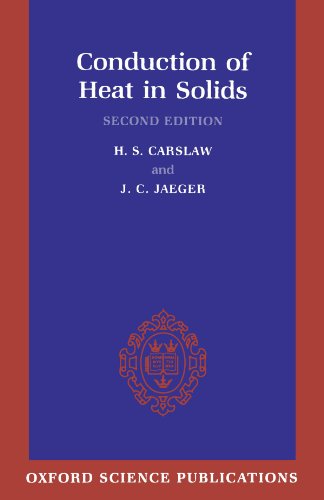- Início
- Hazzard
- Programming Oracle Triggers and Stored Procedures
- More Exceptional C++: 40 New Engineering Puzzles,
- Super Chops: Jazz Guitar Technique in 20 Weeks
- A First Course in Numerical Analysis, Second
- Foundations of algorithms using C++ pseudocode pdf
- Digital Signal Processing: A Computer-Based
- Digital Signal Processing: A Computer-Based
- Quantum Computer Science: An Introduction ebook
- The Closed Treatment of Common Fractures pdf
- Colloquial Turkish : The Complete Course for
- Modern Compiler Implementation in C pdf download
- Tennis Science for Tennis Players pdf free
- Revision of Engineering Drawings and Associated
- Measuring Market Risk, 2nd Edition pdf download
- Operation and Modeling of the MOS Transistor (4th
- Analysis of Beams on Elastic Foundations download
- Fiber Optic Measurement Techniques pdf download
- Petroleum Reservoir Engineering Physical
- Protective Relaying Theory and Applications epub
- Atmel AVR microcontroller primer: programming and
- Statistical Signal Processing pdf free
- Applying Domain-Driven Design and Patterns: With
- Managing Software Requirements: A Use Case
- Firms, contracts, and financial structure pdf
- Market Microstructure Theory pdf
- Maintenance Planning and Scheduling Handbook book
- Clean Code: A Handbook of Agile Software
- Nanomaterials, Nanotechnologies and Design: An
- Feature Extraction and Image Processing pdf
- Ultrashort laser pulse phenomena download
- Canine and Feline Nutrition 3 edition: A Resource
- Requirements Analysis and System Design book
- Quantum Fields in Curved Space download
- Practical English Language Teaching: PELT Young
- Gait Analysis: Normal and Pathological Function
- Onboard Computers, Onboard Software and Satellite
- Real Time UML: Advances in The UML for Real-Time
- Common Mistakes in English (Grammar Practice) epub
- Linear Algebra book download
- Computer approximations pdf download
- Waves and Fields in Optoelectronics book
- Network processors: architecture, programming,
- Byzantine Armies AD 1118-1461 pdf free
- Continuous martingales and Brownian motion pdf
- Designing for Growth: A Design Thinking Toolkit
- Microstrip Filters for RF/Microwave Applications
- An Introduction to Statistical Modeling of
- Handbook of Phase Change: Boiling and
- Hdl Chip Design: A Practical Guide for Designing,
- The Official CHFI Study Guide (Exam 312-49)
- The history of statistics: the measurement of
- Weaving the Web: The Original Design and Ultimate
- Understanding Computers: Today and Tomorrow,
- USMLE Step 1 Lecture notes Vol. 1 Anatomy and
- Learning and Soft Computing: Support Vector
- Becoming an Emotionally Focused Couple Therapist:
- Windows Forms 2.0 Programming download
- The Evolution of Grammar: Tense, Aspect, and
- I
- Intermediate Vocabulary Games pdf download
- Electrodynamics. Lectures on theoretical physics,
- Service Management: Operations, Strategy,
- Pit Bull: Lessons from Wall Street
- Layer 2 VPN architectures pdf
- Long-Term Psychodynamic Psychotherapy: A Basic
- Evaluating Training Programs: The Four Levels epub
- Aids to the Examination of the Peripheral Nervous
- Lagrangian and Hamiltonian Mechanics: Solutions
- Programmer
- Communication progressive du Francais. Niveau
- And Suddenly the Inventor Appeared: TRIZ, the
- The Art Of Woodworking. Handbook Of Joinery pdf
- Principles of Data Conversion System Design epub
- The SAGE Handbook of Qualitative Research pdf
- Markets in profile download
- Primary Grammar Box: Grammar Games and Activities
- Applied Biopharmaceutics & Pharmacokinetics, 5th
- Critical Care Secrets, 4Th Edition ebook
- Color Atlas of Pathophysiology book download
- Fundamentals of Cavitation ebook
- LaTeX Beginner
- Hope and Help for Your Nerves book download
- Kundalini Yoga for Youth and Joy pdf download
- Animal Cell Biotechnology: Methods and Protocols
- Differential Equations with Mathematica epub
- Behavior Modification: Principles and Procedures
- Pharmaceutical Dosage Forms: Disperse Systems
- Unit roots, cointegration, and structural change
- Investment Banking Explained: An Insider
- Amar Chitra Katha - Ramanuja ebook
- Project Finance: A Legal Guide pdf
- Conduction of Heat in Solids pdf
- Schaum
- Accelerated C++: Practical Programming by Example
- Designing Virtual Worlds epub
- The Study of Orchestration (Third Edition) book
- The Tao of network security monitoring beyond
- The game of nations; the amorality of power
- Bela Bartok: An Analysis of His Music pdf
- An introduction to bootstrap download
- Clean Code: A Handbook of Agile Software
- The game of nations; the amorality of power
- MCTS Guide to Microsoft Windows 7: Exam #70-680
- Contatos
Total de visitas: 13781
Conduction of Heat in Solids pdf
Conduction of Heat in Solids pdfConduction of Heat in Solids. H. S. Carslaw, J. C. Jaeger

Conduction.of.Heat.in.Solids.pdf
ISBN: 0198533683,9780198533689 | 517 pages | 13 Mb

Conduction of Heat in Solids H. S. Carslaw, J. C. Jaeger
Publisher: Oxford University Press, USA
Heat can be transferred from one place to another by three methods: conduction in solids, convection of fluids (liquids or gases), and radiation through anything that will allow radiation to pass. We'll also introduce radiation, gravity and heat conduction in solids. Transfer of heat in solids is by conduction. It is also a term that describes processes affecting the atmosphere, waters, and solid earth. There is a simple solution, but first let's learn a little about heat conduction: 1. Such bad conductors of heat are called insulators. Let's talk about heat – solids, liquids, and gases are made up of molecules. Convection is the name for a means of heat transfer, as distinguished from conduction and radiation. Transfer of heat within a fluid is by convection. Liquids: Most of the liquids transfer heat very well. Any radiation which is absorbed turns into heat. Conduction usually can occur in solids such as various types of metal and glass. These waves have different wave lengths depending on the temperature of the heat source. Conduction heat transfer is the heat transfer through medium without accompanied by displacement of the particle medium.